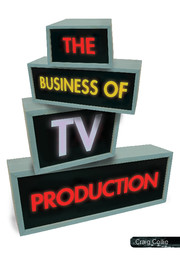Book contents
- Frontmatter
- Contents
- Preface
- Diagrams and tables
- Abbreviations
- Part A Opiate of the people: the television industry
- Part B Massage parlour: development and funding of a project
- Part C Riding the tiger: management of the production
- Part D A nod to the gatekeepers: the environment of television
- Chapter 24 Building the television schedule
- Chapter 25 Legal constraints on content
- Chapter 26 Business structure and operation
- Index
- References
Chapter 24 - Building the television schedule
Published online by Cambridge University Press: 05 June 2012
- Frontmatter
- Contents
- Preface
- Diagrams and tables
- Abbreviations
- Part A Opiate of the people: the television industry
- Part B Massage parlour: development and funding of a project
- Part C Riding the tiger: management of the production
- Part D A nod to the gatekeepers: the environment of television
- Chapter 24 Building the television schedule
- Chapter 25 Legal constraints on content
- Chapter 26 Business structure and operation
- Index
- References
Summary
Programs are acquired by a broadcaster to be placed somewhere in their transmission schedule. This means that the person within the network who commissions a program does so, in effect, for an internal client, namely the person who schedules the broadcaster's programs. This person is often called the network programmer, and is usually one of the executives consulted in a broadcaster's commissioning process. They might even be the person who ultimately says ‘yes’ or ‘no’ to a proposed program purchase. If a network programmer is a key person in program commissioning, it's useful for producers submitting a program proposal to have an understanding of the principles that drive television scheduling, so they can have some insight into the programs a particular network might be looking for.
Every network tries to maximise the audience for each program it has commissioned, whether it is a commercial or public broadcaster, whether its programs are to attract advertisers or to fulfil a public charter. This doesn't mean that the network's objective is necessarily to attract the largest possible audience across the board, although in a broad sense that's the object of commercial television. Public television has other reasons for commissioning programs, but having identified the sorts of programs that fit with network policy, the preference is for a larger rather than smaller audience for that program, although not by abandoning the reasons for choosing it in the first place.
- Type
- Chapter
- Information
- The Business of TV Production , pp. 365 - 375Publisher: Cambridge University PressPrint publication year: 2007



